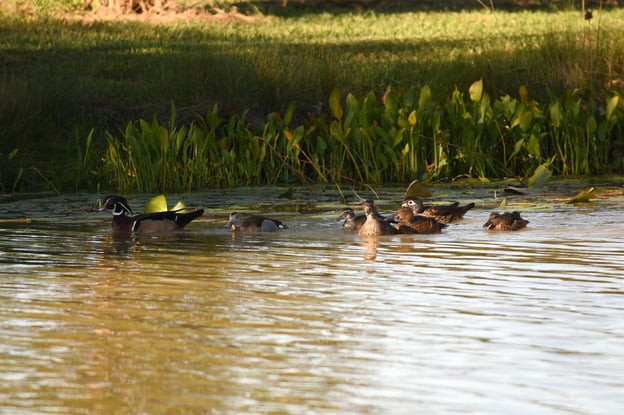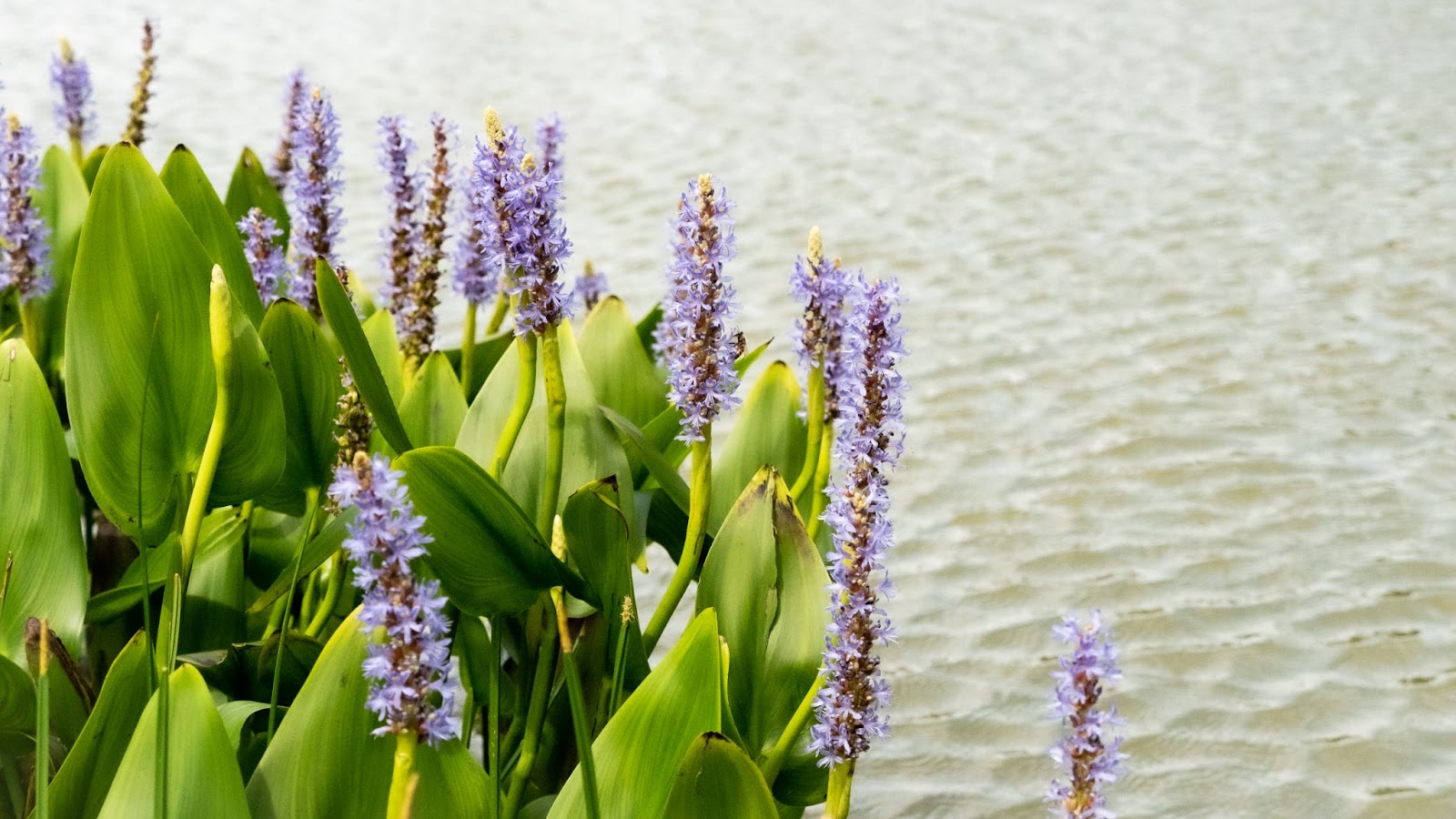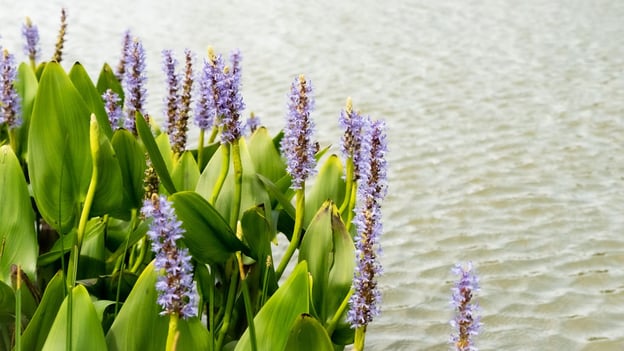Here at Pond King, one of the main things we deal with is aquatic vegetation.
While it can be unsightly and a nuisance to you and your fishing experience, what you might not realize is that vegetation, in the right amount, can actually be quite beneficial to your pond and the fish in it.
How Aquatic Vegetation Improves Ponds and Lakes
The benefits of having vegetation in and around your private lake is multifold. Some plants provide captivating scenery, while other plants' benefits lend more to keeping your lake's living ecosystem at its peak.
Vegetation Provides Habitat for Juvenile Fish and Baitfish
Aquatic vegetation in your pond is excellent habitat for both juvenile fish and baitfish. The presence of vegetation in the shallows of your pond allows juvenile fish and baitfish to evade predators more easily. In turn, this allows them to grow to broodstock size classes and increases reproductive potential within the pond.
By increasing the broodstock density within baitfish populations, you increase their sustainability within the ecosystem.
Supplemental fish stockings, such as bluegill, will become less necessary as your baitfish populations become self-sustainable. The same idea applies to your juvenile bass as well.
The cover from the vegetation will allow your bass to grow to a size where they can evade predation more efficiently from the adult bass that are already present.
Aquatic Vegetation Provides a Sustainable Food Source for Juvenile Fish
I know you might be thinking, “How does vegetation provide food for juvenile fish?” Well, many juvenile fish start their lives eating the insects and larvae that utilize and inhabit areas of aquatic vegetation.
Many insects within our ecosystem begin their lives in water. Insect eggs are often laid in the water and/or on aquatic vegetation. As these insects hatch, they will become available food sources for juvenile bass and bluegill.
The presence of an available food source from these insects and the cover from predators provided by the vegetation, increases juvenile fishes opportunities to grow to broodstock size quicker so they can increase reproduction rates and sustain their population.
Pond Vegetation Creates Less Turbid Water
Aquatic vegetation around the edges of the water is a great way to reduce the turbidity of your pond, especially if there is a lack of terrestrial vegetation around it.
Whenever there is a rain event, runoff washes sediment into the pond. These sediment particles suspend in the water column - making the water dirty, or turbid.
Vegetation around the edge of the pond will aid in filtering these sediment particles carried by the runoff, causing them to settle out of suspension and preventing the whole pond from becoming turbid.
Are there Specific Plants for Reducing Runoff Turbidity or Erosion?
Certain plants, such as American Pondweed, Pickerelweed and Duck Potato, are especially good for slowing down runoff and help maintain the clarity of your pond.
Plants such as these are not only good at preventing your pond from becoming turbid, but also help stabilize the shorelines and sediment that they are rooted in.
Their roots go down and intertwine in the sediment allowing them to hold the sediment together and not get washed or eroded away easily when heavy rains occur.
Plants are Great for Attracting Wildlife
Aquatic vegetation is a great way to attract wildlife to your pond. Whether it be deer or waterfowl, they will both be attracted to the vegetation for food.
Food Sources for Deer and Waterfowl
A couple of examples of plants that attract wildlife are:
- Duck Potato
- Arrowhead
- American Pondweed
- Rushes
Deer and waterfowl consume the seeds, tubers, and the leaves produced by these plants. Adding desired vegetation to your pond is a great way to attract and increase utilization by wildlife where your family and friends can enjoy watching them!

Let Pond King Provide You with Lake Management Services
As you can see, there are several benefits to having aquatic vegetation around your pond. If you are interested in purchasing some aquatic vegetation, give us a call or contact us at the office. We’re happy to help!
See y’all down at the pond!




